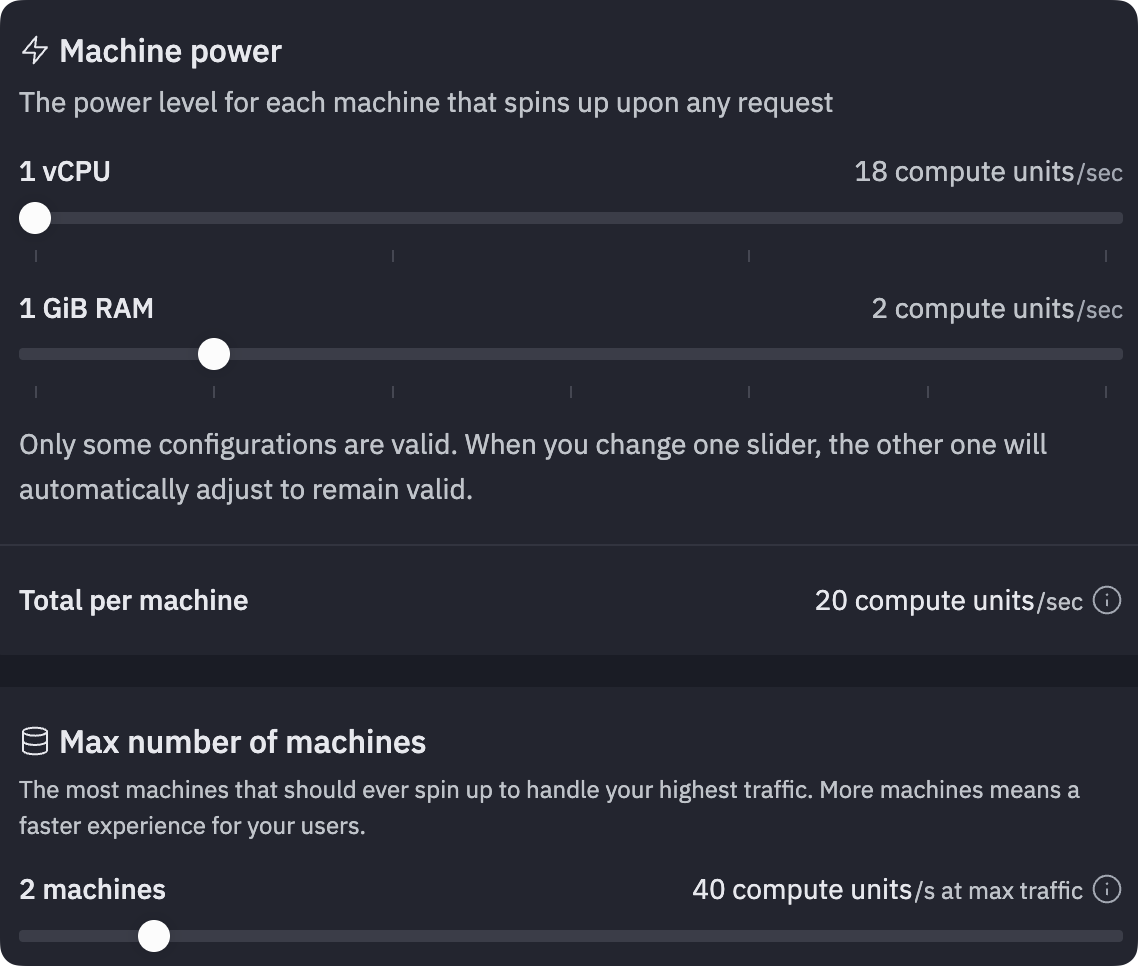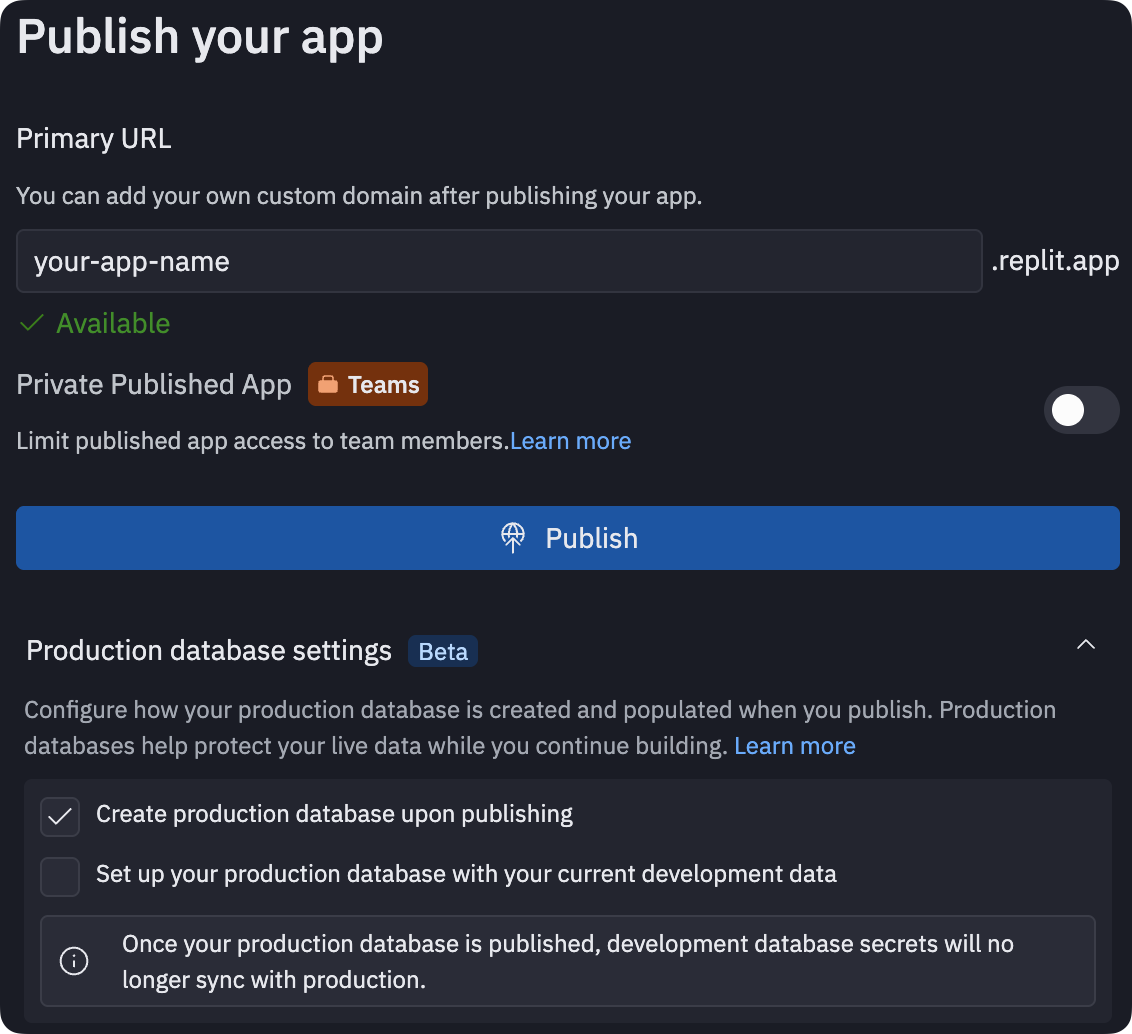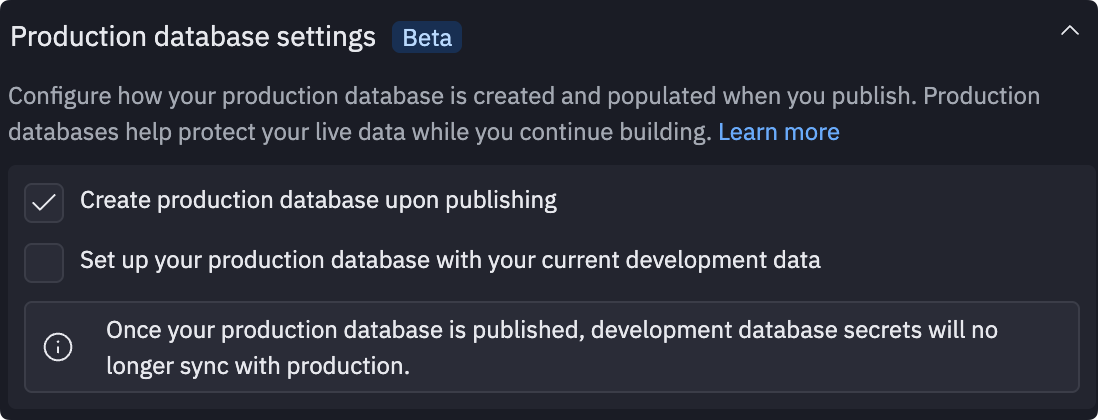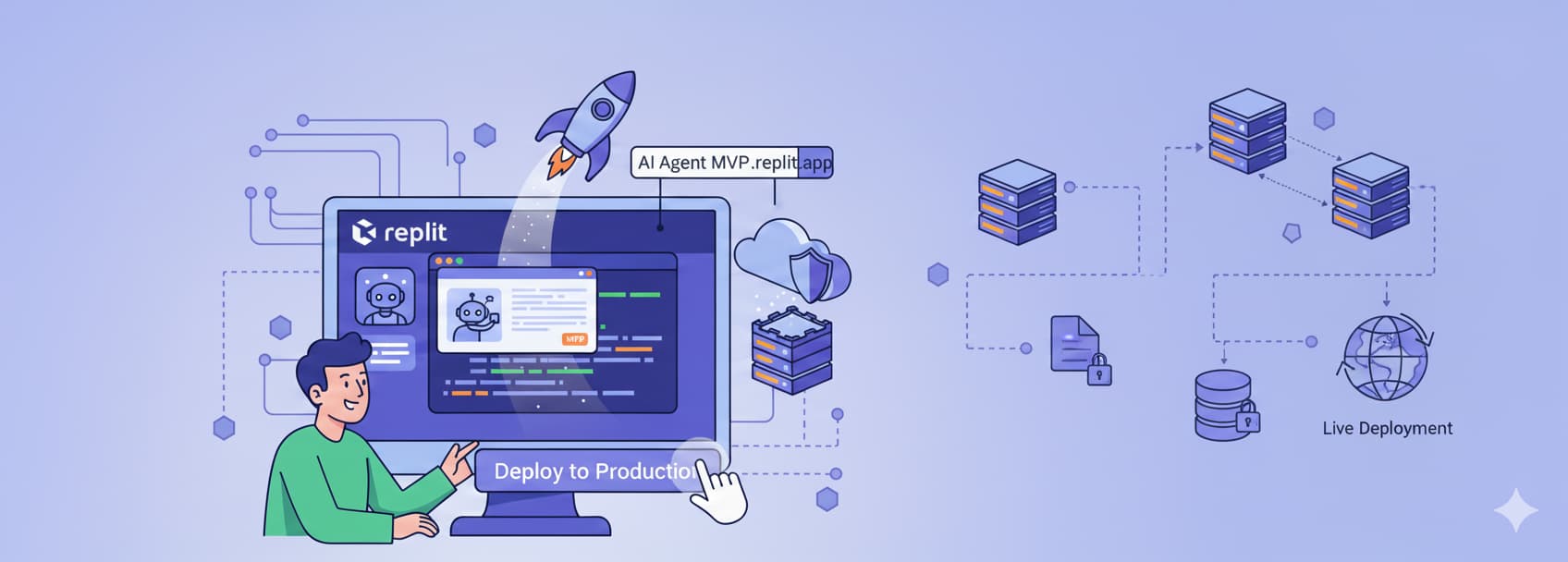So you've built your MVP with Replit AI Agent, and it's time to go live. After helping several founders deploy their projects, I've learned that getting the deployment right the first time saves you from headaches later, especially when it comes to database configuration and cost optimization.
This guide walks you through the most efficient way to deploy your Replit project to production and add a custom domain.
Before you deploy: Security first
Before publishing anything to the internet, protect yourself and your users by running a security audit. Ask your Replit AI Agent to review your entire codebase:
Prompt to use:
"Perform a complete security audit of my entire codebase to identify any vulnerabilities, misconfigurations, or risks before deploying the project live for the first time."
This catches issues like exposed API keys, missing authentication checks, or insecure database configurations before they become problems. You can also use tools like OWASP's security guidelines to understand common vulnerabilities.
Understanding Replit deployment types
Replit offers several deployment options, each designed for different use cases. Here's what you need to know:

Static Deployments
For static websites or frontend apps with pre-built HTML, CSS, and JavaScript (no backend/server-side code). Perfect for portfolios, blogs, or documentation sites.
Autoscale Deployments
Dynamic servers that automatically scale resources based on real-time demand. This is what most SaaS applications need. Your app scales up when traffic increases and scales down when idle, keeping costs efficient.
Reserved VM Deployments
Dedicated virtual machines for always-on, mission-critical apps requiring consistent uptime. Best for backend services, APIs, or applications that can't afford any downtime.
Scheduled Deployments
For apps that run on a schedule (cron jobs, scheduled scripts). Useful for backups, automated emails, report generation, or other routine server-side tasks.
Configuring autoscale deployment for a SaaS app
For most MVP projects, Autoscale Deployment strikes the right balance between performance and cost. Here's how to configure it efficiently:
Step 1: Choose your deployment type
Select "Autoscale Deployments" from the deployment options.
Step 2: Configure resource allocation
The default settings can be expensive. For a new MVP, I recommend starting with:
- 1 vCPU
- 1 GiB RAM
- Maximum 2 machines


These settings keep costs manageable while still handling moderate traffic. You can always scale up later once you validate demand.
Critical: Set up your production database
This is where many developers make a costly mistake. Don't skip the production database setup.
In the Production Database section, check the box that says: "Create production database upon publishing."

Why this matters:
- Data protection: Your live user data stays separate from your development environment
- Safe testing: You can make changes locally without affecting production data
- Clean rollbacks: If something breaks, your production database remains intact
Without this separation, any local development work directly affects your live users. That's a disaster waiting to happen.
Build and run commands
Keep the default build and run commands suggested by Replit unless you have a specific reason to change them. Replit analyzes your project and usually gets these right. You can learn more about configuring deployments in the Replit documentation.

Bonus: Replit automatically copies your secret keys from the local environment to production, so you don't need to manually configure environment variables.
Publishing your project
Once everything is configured:
- Click "Publish"
- Wait a few minutes for the deployment to complete
- Your app will be live at a Replit-provided URL
The first deployment typically takes 3-5 minutes as Replit builds your project and provisions resources.
Adding a custom domain
After your app is live, replace the default Replit URL with your custom domain:
- Go to Publishing → Domains
- Choose either:
- Buy a new domain (Replit will handle everything)
- Manually connect (if you already own a domain through Namecheap, Google Domains, or similar)
- Follow the prompts to add your domain
- Wait for DNS propagation (usually 15-60 minutes)
That's it. Your custom domain will be live and automatically configured with SSL. Replit provides free SSL certificates through Let's Encrypt for all custom domains.
Alternative deployment options
While Replit makes deployment simple, it's not your only option. Depending on your technical comfort level and budget, you might consider:
- Vercel or Netlify: Great for frontend-focused applications
- Railway or Render: Full-stack deployment with generous free tiers
- DigitalOcean or AWS: More control but requires more technical knowledge
For non-technical founders who've already built on Replit, staying on the platform keeps things simple. The integrated deployment means less context-switching and fewer things to learn.
Cost considerations
With the conservative settings I recommended (1 vCPU, 1 GiB RAM, max 2 machines), you're looking at approximately $10-20 per month for a low-traffic MVP. This increases as your traffic grows, but by then you'll have the revenue to justify it.
Compare this to the cost of:
- Learning AWS and dealing with configuration
- Hiring a DevOps consultant
- Wasting time on deployment instead of talking to customers
For most early-stage projects, Replit's simplicity is worth the slightly higher cost per unit of compute.
What happens next
Once deployed, your focus shifts from "getting it live" to "keeping it running well." Monitor these key areas:
- Performance: Check response times and load speeds regularly
- Errors: Set up error tracking with tools like Sentry or LogRocket
- Usage patterns: Watch when traffic peaks to optimize your autoscaling
- Costs: Review your monthly Replit billing dashboard and adjust resources as needed
Need help with your deployment?
Getting your MVP live is just the first step. The real challenge is building features users actually want and acquiring your first customers. That's where marketing comes in.
If you're launching a tech product and need help with your go-to-market strategy, paid acquisition, or growth marketing, schedule a consultation and let's talk about how to get your first 100 customers.


